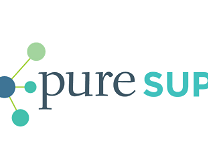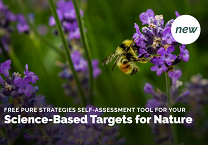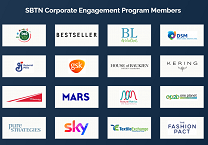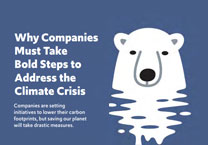World Water Day is March 22, 2012. Will you have a plan in place?
by Tim Greiner
18 October 2011
Two-thirds of the world's growing population is expected to face water scarcity in 2025, according to the United Nations. That's huge. A finite amount of fresh water will have to be shared by more people and more industry and food production than ever before. What needs to change for this happen? Businesses need to play a vital role in this conversation.
We find that most companies are arriving late to this dialogue — but don't despair. There are more tools available than ever before to help you get started in assessing your business's water risk and in determining the most sustainable course of action.
Water is not carbon.
Most companies have made impressive progress in carbon footrpinting, setting goals, and reporting reductions. But water needs to be understood at the regional level – reductions in water-rich areas do not have the impact of reductions in water-scarce areas. A critical step for all businesses is to plot water consumption points against water –scarce regions and then prioritize efforts in these areas. Here are some tools to help you get started:
- Global Water Tool: Developed by the World Business Council for Sustainable Development, this program offers superior water scarcity mapping capabilities and a water footprinting tool.
- Global Water Footprint Standard: The extensive manual at waterfootprint.org guides users through the process of creating a corporate water footprint.
- Aqueduct Alliance: The World Resources Institute and several companies recently launched this database and mapping tool making use of the Coca-Cola Company's extensive water risk data base.
- For reporting information, see the Carbon Disclosure Project's Water Disclosure Projector the Global Reporting Initiative.
Here's one of my favorites.
Take a look at these interactive water maps created by two students at the Harvard Graduate School of Design. You can compare your country's water use to that of other nations and examine embedded water use for different foods and consumer goods. It is a great way to get a conversation going.
Finally, another important milestone – 2015.
That year marks the close of the United Nations' International Decade for Action on Water. Make sure you'll have some progress to report!
Written by Tim Greiner
Tim Greiner, a Pure Strategies Co-founder and Managing Director, has pioneered approaches to building environmental and social integrity into products, brands, and businesses. He is also a co-founder of the Chemical Footprint Project and has guided sustainable chemicals management strategies for companies across diverse industries. His experience spans the spectrum from developing sustainability strategy, drafting sustainability goals, designing product sustainability programs, creating approaches to transform sustainable supply chains and facilitating a landscape level stakeholder process to improve climate and water quality outcomes.
Tim's recent projects include helping build a leading climate strategy for Ben & Jerry's, developing sustainability goals for King Arthur Baking, creating a corporate sustainability strategy for Lush, and developing a regenerative grazing standard for Timberland.












